Search the Blog
Categories
- Books & Reading
- Broadband Buzz
- Census
- Education & Training
- General
- Grants
- Information Resources
- Library Management
- Nebraska Center for the Book
- Nebraska Memories
- Now hiring @ your library
- Preservation
- Pretty Sweet Tech
- Programming
- Public Library Boards of Trustees
- Public Relations
- Talking Book & Braille Service (TBBS)
- Technology
- Uncategorized
- What's Up Doc / Govdocs
- Youth Services
Archives
Subscribe
Tag Archives: Friday Reads
Friday Reads: Shine! by J.J. and Chris Grabenstein
Piper (7th grade) considers herself a “blender,” one who would rather blend in with the crowd than stand out. When her father is hired as the music teacher at the exclusive Chumley Prep, she is thrust into a new school where, it seems, everyone excels. The quintessential mean girl is there, Ainsley, and she is almost nonstop mean. Still, Piper finds some good friends and things are looking up.
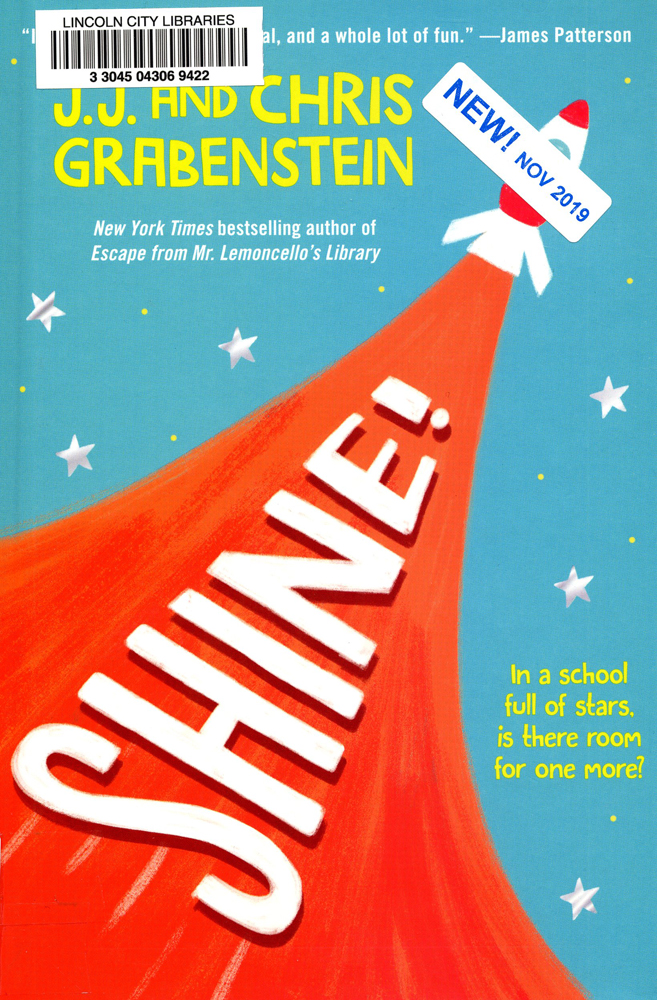
Then a new competition is announced: The Excelsior Prize, and everyone is determined to win it, though no one is quite sure what accomplishments it celebrates. Piper manages to continue being herself, helping others and working hard in her classes. She also would like to win the new prize, and the Science Fair seems to be the first step. Piper is feeling good about her entry, and then she is blindsided by Ainsley, who uses a technicality to exclude Piper from the Science Fair, taking first place for herself, hoping it will help ensure that she, Ainsley, wins the new Excelsior Prize.
This is a positive book about being true to yourself and caring about others. It is for upper elementary and early middle school readers.
Grabenstein, J.J. and Chris. Shine! Random House Books for Young Readers, 2019.
Friday Reads: Upright Women Wanted by Sarah Gailey
ARE YOU A COWARD
tagline from the cover
OR ARE YOU A LIBRARIAN?
When it seems like absolutely everything is going awry, cracking open a work of dystopic fiction doesn’t sound like the wisest idea, but Gailey’s novella Upright Women Wanted is a timely message of hope, community, and resistance – and of Librarianship.
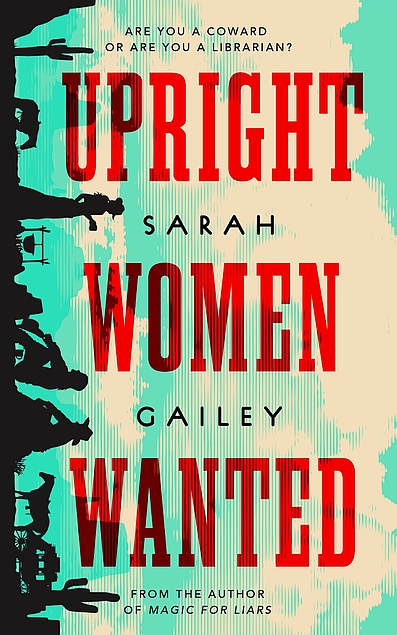
Yes, this book is about Librarians. Gunslinging, horseback-riding, revolutionary queer librarians. Upright Women Wanted is something of a Western, set in the near-future, and is pretty much everything I’ve ever wanted from a story.
When Esther flees from home after her (secret) girlfriend Beatriz’s execution at the hands of her father, she stows herself into the back of a Librarian wagon, determined to become a morally upright woman (as all Librarians, who are tasked in this dystopic, what Publisher’s Weekly called “neo-western,” America to distribute Approved Materials, are supposed to be).
What Esther is soon to discover is that nothing she was told about the world, about Librarians – and about herself – is true. As she makes her way across the Southwest in the company of the Librarians, she’s forced to reckon with the State of things (pun intended), and with who she is and who she can be and love.
I love a Western, and I love a diverse Western, especially, and most of all I love a diverse, science-fiction Western. Throw a band of roving librarians into the mix and I’m sold. One of the events in history that I am most fascinated by is the WPA Pack Horse Library Project, ever since I stumbled across That Book Woman by Heather Henson. The Pack Horse Library Project is such a unique time period, and it captures the imagination and inspiration. Librarians are connected to our communities in a unique way, and the way we strive to maintain those connections – and advocate for those communities – is just as important as the distribution of materials. I couldn’t find any evidence to confirm that Gailey was inspired by this era, but it’s clear that love and a similar spirit went into the novella, regardless.
Upright Women Wanted is a fast-paced, quick-read of a book, with plenty of well-written action and characters. While my main complaint was that I wanted it to be longer, to have its world and all its circumstances and people fully fleshed out, it truly holds its own for a 170-odd page novella. I would definitely pick up a full novel of this story, or I hope that Gailey at least decides to pen a longer follow-up.
Gailey, Sarah. Upright Women Wanted. Tom Doherty Associates, 2020.
Henson, Heather. That Book Woman. Atheneum Books for Young Readers, 2008.
Friday Reads, Death on Demand by Carolyn G. Hart

Carolyn G. Hart’s Death on Demand is the first in a series of cozy mysteries located in Broward’s Rock, South Carolina, an island. Annie Laurance moved to Broward Rock to spend the summer with her uncle, he dies in a boat accident, and so she inherits his bookstore, remodels it, and names it Death on Demand. The story begins with a list of items, and an incident and death in a veterinary clinic. Then, with hints already placed, we meet Annie, in her bookstore, putting off a phone call. Instead of making the call, she receives a call from Max Darling, the young man she was attracted to in New York City. She left no forwarding information; he’s had to find her through a series of calls and detective work. In addition, because he tracked her to South Carolina, he’s also driven down from New York, to visit, and find out what took her from her career in the city. And away from him.
I had missed Ms. Hart’s writing as much as these two characters. Annie is a straight shooting girl from Texas with a strong work ethic, and Max “delighted in ambiguities, disdained certainties, and loved above anything to puncture pretensions.”* But he makes her smile and her heart lifts when she finds out he’s in South Carolina. And the tiny island has several mystery writers of some note living there full time, as well as a small town community. What could go wrong? Well, at the usual meeting of the writers, her landlord, a true crime writer, has told her that he’s going to share information in his next book—about his fellow mystery writers’ dirty laundry. And the writers are as varied as possible, thriller, cozy, police procedural, children’s and true crime. At the party, the lights go out, the usual kerfuffle of bumped tables, people shouting, and offering directions. When Annie gets the lights on, her landlord is found on the floor with a dart in his throat, and dead. When the sheriff arrives, he blames Annie, for both the death of her landlord, but also her Uncle, with whom she had a close relationship. It all spurs her to clear her name.
I will admit the series begins in 1987, so sometimes one has to recall the state of technology, not just phones, but computers. So much needs to be seen in the correct timeline. The island also relies on a ferry that crosses to and from the mainland at set times. Although there are private boats, and a marina, the story reads like a closed system. Also, the two main characters, (and the author), throw in references to mystery writers and their books, from the golden age of mystery to the present. Which, if you don’t know them, will have you writing lists of titles of books. And did I mention Ms. Hart’s writing? This is just the book to read, or reread, during stressful times.
Death on Demand, by Carolyn G. Hart, 1987.
*quoted from Death on Demand, Chapter 3, page 7, in omnibus, Death on Demand/Design for Murder, Bantam Book, printed in 2008.
Posted in Books & Reading
Tagged Carolyn G. Hart, cozy mystery, Death on Demand, Friday Reads, South Carolina
2 Comments
Friday Reads: Find Me Unafraid: Love, Loss and Hope in an African Slum
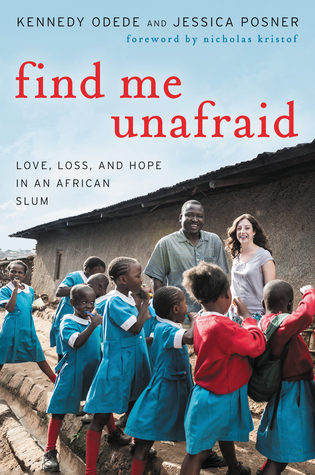
This past year has slapped us all in the face. Now more than ever, it is apparent that the world has problems. But we can’t stop there. The world has solutions too.
Today I am reviewing Find Me Unafraid: Love, Loss, and Hope in an African Slum by Kennedy Odede and Jessica Posner. It’s a love story centered around extreme poverty in Kibera, the largest slum in Africa.
Honestly, I read it to get out of my head and see the world from other perspectives. Part of me cringed at the title, expecting to find another sob story, simply trying to make me feel guilty for existing in comparative luxury. But it wasn’t like that. The story was frank and unapologetic.
This is the story of Jessica Posner, a student at Wesleyan University who went on a study abroad trip to Africa. It was here that she insisted upon staying with Kennedy in Kibera. The description of Kibera was too real. I could see and smell the stinking scent of poverty, accented by the behavioral and economic forces perpetuating the cycle.
I felt a pang in my heart as Jessica witnessed new traumas. But she also brought new hope. Kennedy had been doing the long, slow work of economic development in Kibera. He brought people together over things as simple as soccer, then escalated to women’s rights. It was hope that drew Jessica to Kennedy, and visa versa.
Much of this story is about the school for girls that the two built together. It is about Kennedy finding a path towards education, and attempting to bring prosperity back to Kibera. This book shows that the road to change and forward momentum is slow. Achingly slow. But the work is worth doing.
I did get out of my head while reading this book. I held paper differently, and appreciated my ability to read. I thought about Kennedy learning to read from scraps of newspaper in the garbage. There was no other alternative there.
I shopped for groceries differently and considered food waste. Before, I rarely thought about the supply chain and how goods arrived at my doorstep. Many of them in under two days. This book made me reconsider my life and how I live it.
But a large part of that was because of the events of this year. Covid, climate change, black lives matter, massive unemployment, and a bit of gender equality for good measure. Problems are mounting.
If Jessica and Kennedy can build a school and change the lives of girls who were dealt an unfair hand in life, what am I doing? All I know is that it could be more. Read this book and try new things. Find words and stories that keep you going.
“It always seems impossible until it’s done” – Nelson Mandela.
Odede, Kennedy and Jessica Posner. Find Me Unafraid: Love, Loss, and Hope in an African Slum. HarperCollins, 2015.
Friday Reads: Before and Again by Barbara Delinsky

The Wikipedia entry for Barbara Delinsky states that “she is an American writer of romance novels, including 19 New York Times bestsellers.” (https://en.wikipedia.org/wiki/Barbara_Delinsky) While every point of this is true it misses the vast number of her books that I would say fall under “stories of intrigue”, though not mysteries, as within the first chapter or two you are told what has happened and at times even by whom. What Delinsky does masterfully is get into why the event happened and why the people involved act the way they do, spinning a wonderful web of intrigue throughout.
“Before and Again” follows the story of Maggie Reid as she makes a new life for herself in a small town Vermont after her daughter dies. Almost immediately you find out that a 15 year old boy has been picked up by the FBI for hacking. That someone had been hacking grades at the high school had been no secret in the town but everyone is sent reeling when he’s also charged with hacking into some very prominent twitter accounts. Maggie considers the boy’s mother a good friend so she can’t help but get involved but that means dealing with her own past and helping a lot of others deal with theirs as well.
Barbara Delinsky’s books are like curling up with a cup of tea in an oversized comfy chair, even if you happen to be reading on the bus or over your lunch hour in the break room, so easy to get into with beautiful imagery that’s not hard to conjure. While “Before and Again” is probably one of my least favorite of Delinsky’s books that I’ve read sometimes, especially in times like these, it’s more about how the reading experience makes us feel rather than what we’re actually reading.
Friday Reads: Sigh, Gone: A Misfit’s Memoir of Great Books, Punk Rock, and the Fight to Fit In, by Phuc Tran
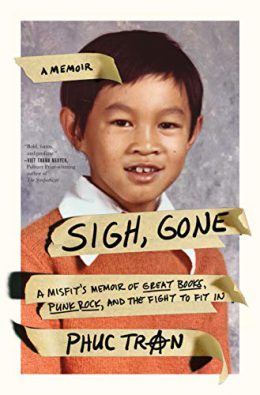
I love memoirs. Not only do they offer readers insight into what it’s like to live lives different from their own, they also remind us of how much we humans have in common. That’s definitely the case with Sigh, Gone: A Misfit’s Memoir of Great Books, Punk Rock, and the Fight to Fit In, by Vietnamese American teacher, writer, and tattoo artist Phuc Tran.
In 1975, when Tran was one, his family fled the fall of Saigon and wound up resettled in Carlisle, Pennsylvania. In Sigh Gone, Tran describes what it was like growing up as a member of “the token refugee family” (2) in town. As one can imagine, it included schoolyard taunts and name-calling, and, when out in public with his family, the discomfort of always sticking out.
Tran also describes the resentment he felt toward his parents over what he saw, at the time, as their cultural and English language failings: “I needed to trust in my dad’s ability to navigate the world at large, and I was already doubting him. . . . Five-year-olds were supposed to believe what their parents said. Maybe some kids’ parents still had the golden nimbus of infallibility, but not my parents and not for me” (16).
Going forward, Tran chronicles his relentless efforts to assimilate. By high school, his two-pronged strategy included pursuit of academic excellence and successful integration into the punk/skater subculture. Of the later, he writes, “[b]eing a freak because of my weird clothes and hair was a respite. These were things that I had chosen . . . Fighting rednecks because you were a punk was far better than fighting because you were Asian, and fighting with allies was far better than fighting alone” (6).
So why did this book resonate with me? For one, Tran’s depiction of high school, with its cliques and angst—a “cultural cul-de-sac built with the craftsman blueprint of John Hughes, the Frank Lloyd Wright of teen malaise” (2)—is viscerally familiar. His description of his job as a library page also warmed my librarian’s heart, as did his discovery and adoption of Clifton Fadiman’s The Lifetime Reading Plan, which he stumbled on while prepping for the library’s used book sale.
Though the Plan, was “unapologetically American, classist, and white” (4), Tran could not have cared less at the time; it served as a catalyst for his burgeoning love of literature–which the English major in me appreciated. He also viewed the Plan as his entrée to the world of big ideas that can connect people across time, geography, and culture—which is what Tran, himself, has accomplished with this memoir. Sigh, Gone concludes right after Tran graduates from high school, just as he’s poised to head off to Bard College, which had described itself to him in its admissions literature as “A Place to Think” (267). So fitting!
Friday Reads: The Lending Library, by Aliza Fogelson
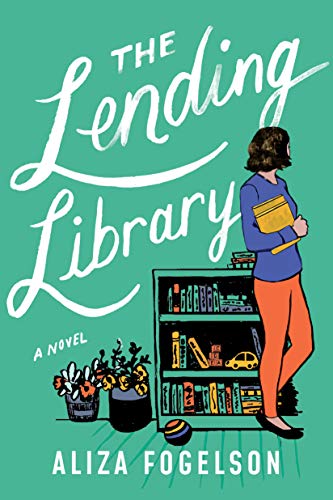
What would you do if your town library closed for renovations, and the nearest library is an hour’s drive away? Read The Lending Library, by Aliza Fogelson to find out what one women did in just such a situation…
When the Chatsworth library closes indefinitely, Dodie Fairisle loses her sanctuary. How is a small-town art teacher supposed to cope without the never-ending life advice and enjoyment that books give her? Well, when she’s as resourceful and generous as Dodie, she turns her sunroom into her very own little lending library.
At first just a hobby, this lit lovers’ haven opens up her world in incredible ways. She knows books are powerful, and soon enough they help her forge friendships between her zany neighbors—and attract an exciting new romance.
But when the chance to adopt an orphaned child brings Dodie’s secret dream of motherhood within reach, everything else suddenly seems less important. Finding herself at a crossroads, Dodie must figure out what it means to live a full, happy life. If only there were a book that could tell her what to do…
I read The Lending Library, by Aliza Fogelson, in the Kindle format, and thoroughly enjoyed it. This is a lovely debut novel that teaches us how important libraries are to individuals, families, friends, and communities. Definitely an excellent read!
Friday Reads: Akata Witch by Nnedi Okorafor
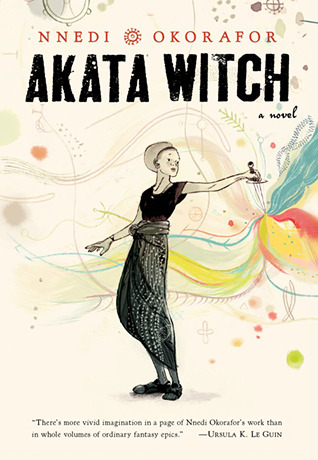
During my recent morning walks, I’ve been trying out more audiobooks instead of the usual podcasts. Akata Witch by Nnedi Okorafor was one that appeared on my recommended list (which then reminded me that I also have the hardback copy sitting on my to-read shelf for a while, oops) and is narrated by Yetide Badaki. I haven’t quite finished it yet, but it’s definitely hard to put down. The world-building and magic, rooted in mythology, is fantastic.
Twelve-year old Sunny feels like she just doesn’t belong anywhere, living between two worlds. She was born in New York City, but moved to Aba, Nigeria with her parents and brothers when she was nine. All Sunny wants to do is to go to school, play soccer (where she would excel on the field if given the chance), and laugh with friends. However, she’s constantly bullied by her classmates, her brothers, and even her father. The boys at school won’t let her play soccer with them. Even if they would, her albinism causes her skin to be far too sensitive to be out in the sun, as well as more bullying. But Sunny never backs down, she’s a strong and intelligent character.
One night, during a blackout, she sees a nightmarish vision in candlelight. Shortly after, she meets Orlu and Chichi, and her odd life starts to make a little more sense. She has strong magical abilities which she begins to study as a new member of the ancient Leopard People society. The wonderful magical world opens up to Sunny, as she learns to turn her weaknesses into her greatest strengths while keeping it all secret from the rest of her family. She and her new friends quickly learn how dangerous this world and their training can be as they’re set to stop a dangerous killer before Sunny’s vision can come true.
Okorafor, Nnedi. Akata Witch. Penguin Group, 2011.
Friday Reads: Kindred by Octavia E. Butler
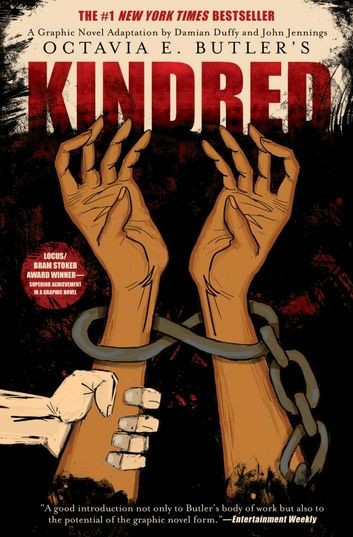
Hello, Library People. I can pretend I’m writing this Friday Reads for the whole world, but I know my likely audience, and I’m writing it for library people. So, hi there, library people!
Today I walked into my public library for the first time in months, and I went to the shelf to look for a book (that I looked up in the online catalog before I went into the building), and the book was where it was supposed to be, and I got to check it out and take it home, and I am excited to read it. I appreciated every step of this process so much. I know and love people who work in libraries, and I care about their safety—and I even care about the safety of library people I don’t know (or love?)—so I understand why I wasn’t able to go into my public library’s physical space like this last month, or the month before that. I will understand if circumstances require that it happens again, that I can’t soup-to-nuts my whole borrow for myself. I just want to emphasize that I appreciate being able to go into my local public library, and I won’t take it for granted.
Now, that book I’m excited to read (or, at this point, to keep reading). I was looking online to see what Octavia E. Butler works were available to check out at my local branch, and I saw they had this book that I was surprised I didn’t already know about: a graphic novel adaptation of Butler’s novel, Kindred.
Speculative fiction gets a bad rap for being escapist, which is a hard argument to fight because it presupposes there’s something wrong with escapism in entertainment. And graphic novels get a bad rap for being comic books, which again is a hard argument to fight because it presupposes there’s something wrong with comic books. For this reader, though, I saw the recipe for a great read.
If you want a story that lets you leave your world completely, yet teaches you more about the world you eventually have to go back to, then Octavia E. Butler is a writer for you. Butler writes literary speculative fiction, or speculative literary fiction, whichever word arrangement makes you more comfortable. Library people, since I’m writing this for you, I will tell you why you’ll like Kindred in particular. As a library person, you have strong views about genealogy. Whether you love or hate genealogical research, that familiarity facilitates an instant interest in this plot: A young Black author in the living in 1970s California meets her White slaveholder progenitor—and her safety and her very existence depends on his survival in the antebellum South.
Kindred is available as a novel, and an audiobook, and a graphic novel. (A movie is in post-production, but theatrical releases are all messed up right now, so no telling when that’s coming out, but it stars Janelle Monae, so you’ll be hearing good things about it.)
Duffy, Damian, John Jennings, Nnedi Okorafor, and Octavia E. Butler. Kindred: A Graphic Novel Adaptation. , 2018. Print.
Friday Reads: The Bartender’s Tale by Ivan Doig
I read this novel for my book club and was grateful to have discovered the Montana author, Ivan Doig, who unfortunately died in 2015. The Bartender’s Tale is a slow and pleasant read. It has the pace of a nice morning walk through a small rural Montana community where everyone knows your business.
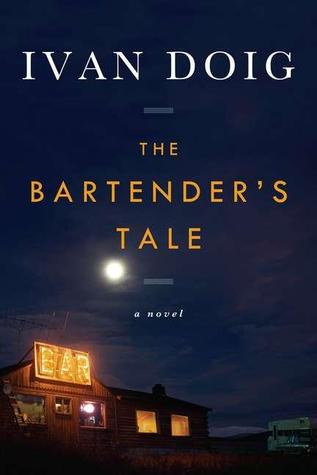
The book takes place in 1960 and begins with Tom Harry, the owner of a well-worn bar called The Medicine Lodge as he drives to his sister’s home in Arizona to reclaim his 12-year-old son Rusty. The atypical single father and son forge a new life together based largely in and around the bar. At The Medicine Lodge, life-long lessons in treating people right are more than just good business practice. Tom is something of a local ombudsman in every way but by election.
Rusty knows that his mother and father split the blanket shortly after he was born but nothing much beyond that. Rusty befriends Zoe, the daughter of the couple who own The Spot – an average eatery down the street – who is also new to town. Their jokes, laughs, and shtick are typical of kids coming of age. Their favorite thing to do is to listen to conversations through the vent in the back room of the bar; an activity that provides a curriculum of adult vocabulary and sex education.
When Del Robertson shows up with a grant-funded project through the Library of Congress to record people’s stories, there is a shift of focus for Tom and Rusty. They assist Del in helping persuade often-unwilling volunteers agree to participate. Then, another disruption named Proxy (a nickname for her hair color) arrives in a red Cadillac with her moody 21-year-old daughter in tow. Proxy has a past with Tom, from another bar named The Blue Eagle, and everyone seems to know that these still waters run deep.
This was a book I was sad to finish. Despite Doig’s death, I’m grateful to know that he completed 12 books in this series. Even though this book is 10th in the series, this book worked quite well on its own.
Doig, Ivan. The Bartender’s Tale. Riverhead Books, 2012
#BookFace & Friday Reads: “Lovely War” by Julie Berry
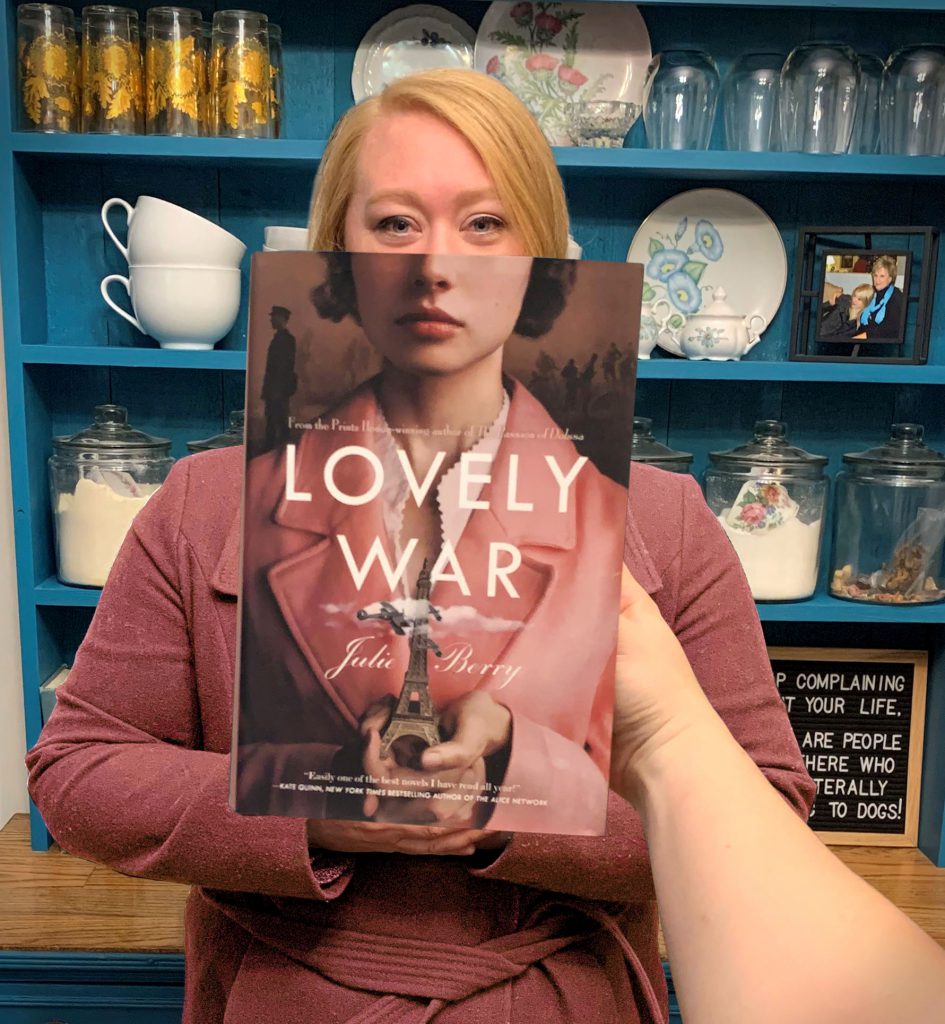
I first picked up this book because I was drawn to the cover art and soft, muted color scheme, but also because I’m a sucker for historical fiction. I expected a straight forward period romance, boy meets girl, boy goes to war, there’s pining, an injury, and a happily ever after. Don’t get me wrong, there is some of the expected, but let’s just say I was pleasantly surprised by this novel’s unexpected plot and characters.
It all starts with a torrid affair between gods, Aphrodite and Ares to be exact. Then turns into two love stories the goddess orchestrated during the last World War. The author introduces us to interesting characters from different walks of life, weaving their stories together for the reader. Berry dives in to overlooked parts of World War I history like the roles of black American soldiers, James Reese Europe’s introduction of Jazz to France, and YMCA volunteer work to name a few. I really appreciated the appendix and bibliography included at the end of the book. They let the reader know which parts of the story are factual and expand on those issues. Berry also includes references to nonfiction works that she used, so the reader can keep learning.
This title comes from our large collection of children’s and young adult books sent to us as review copies from book publishers. When our Children and Young Adult Library Services Coordinator, Sally Snyder, is done with them, the review copies are available for the Library System Directors to distribute to school and public libraries in their systems. Public and school library staff are also welcome to stop by and select some titles for their library collections. We think this one would be a great addition to any library. Contact Sally Snyder for more information.
Love this #BookFace & reading? We suggest checking out all the titles available in our Book Club collection, permanent collection, and Nebraska OverDrive Libraries. Check out our past #BookFaceFriday photos on the Nebraska Library Commission’s Facebook page!
Berry, Julie. Lovely War. Viking Books for Young Readers, 2019.
Posted in Books & Reading, General, Youth Services
Tagged Book Covers, bookfacefriday, books, Friday Reads, Julie Berry, Lovely War, Reading, YA
Leave a comment
Friday Reads: For Love of the Game by Michael Shaara
With the absence of baseball in the spring of 2020 comes the opportunity for an alternative – a good baseball book. I came across a copy of Michael Shaara’s For Love of the Game among my books. I don’t recall that I actually read the book at some time in the past. I do remember the movie version that starred Kevin Costner as Billy Chapel, the baseball legend and sure to be future Baseball Hall of Fame pitcher, the book’s protagonist.
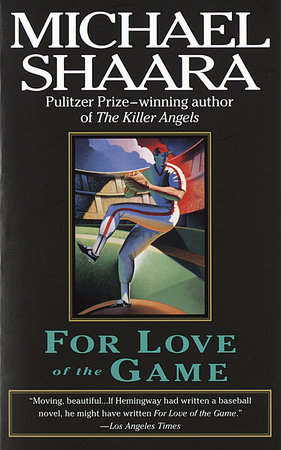
Having read the book recently, the book and movie versions have some significant differences. So it goes. In short, Chapel will pitch the final game of the season and likely his last as a major leaguer. This with the background of an uncertain personal relationship and also the knowledge that the team he has been with for his entire career is about to betray him.
Michael Shaara is best known for The Killer Angels, his Pulitzer prize-winning classic regarded as one of the best Civil War novels. For Love of the Game was published after Michael Shaara’s death. The book includes an introduction written by Sharra’s son, Jeff.
Michael Shaara began his career writing science fiction short stories. A family vacation to Gettysburg, Pennsylvania, in 1966 was the inspiration for his novel, The Killer Angels. It was his love for baseball that resulted in For Love of the Game.
Shaara, Michael. For Love of the Game. Ballantine Books, 1991.
Friday Reads: The Beautiful Ones
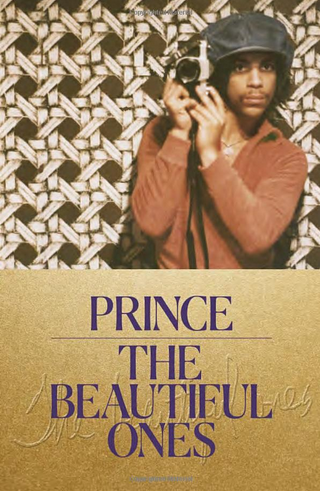
Intro: With all the unrest in the nation that started in the Minneapolis area, I thought it appropriate to post this FR. Years ago, I had a high school friend who moved to Chanhassen, Minnesota (just south of the Twin Cities), where Paisley Park is. I visited my friend a few times in Chanhassen, and quickly realized January was not a good time. Summers were nice, though. Sadly, my friend has passed away (cancer). He never saw his 26th birthday.
Opening: Yep, it is another music biography. I have a sort of love and hate relationship with music biographies, but this one is well done and I recommend it. A few years ago, I was in the Minneapolis area (after the death of Prince) and thought of touring Paisley Park. I decided against it because I did not think that Prince would have wanted visitors that way. However, I completely understand the estate’s decision to do so. By not opening it up, there’s no way it would sustainable. Musical biographies can be quite a hit or miss, but often are a miss due to the fact they come across as braggadocios. Prince certainly seemed like the antithesis of that.
Background Info: Before he died, Prince was working on this book, with the help of Dan Piepenbring. The intro was written by Dan, summarizing his first meetings with Prince, and Prince’s vision for the completed work (he intended for it to cover his childhood up to his performance at Super Bowl XLI (in 2007). Dan’s anecdotes provide an interesting segue into the actual writing of Prince, and the numerous photos published in this book. The stories, including Dan staying at the local Country Inn and Suites (the place closest to Paisley Park in Chanhassen, MN), Prince driving him around in his Lincoln MKT, and live performances at Paisley Park.
Filler Material: The bulk of the middle part consists of Prince’s actual writings, and then the translations. His writings are hard to read, given his affinity for code (e.g. eye symbol for I) and handwriting. The gist of the book, and hats off to the publishers, was not to fill in the chronology after where Prince was at with his writing. Therefore, there is no speculation about his thoughts, as the material is published just as he wrote it, and stops at the point where he was at when he passed (before the Super Bowl XLI performance). As a companion piece, Originals (on CD, vinyl, MP3, take your pick) published after his death, is highly recommended. Toss it on the old (dust off the console stereo) or new hi-fi and turn up the volume.
Killer Ending: “So much has been written about me, and people don’t know what’s right and what’s wrong. I’d rather let them stay confused.” – Prince
Prince. The Beautiful Ones. Spiegel & Grau, 2019.
Friday Reads: The Pumpkin War by Cathleen Young
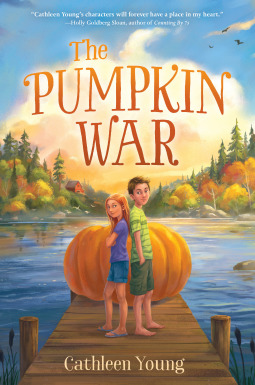
I don’t know about you, but reading during this pandemic has been a challenge. Between working from home, keeping a school-age kid on track with his lessons and a preschooler out of the cookie jar, not to mention feeding everyone 3-5 times a day (why are we so hungry?!?), and the constant blare of the news, I just don’t have the time or attention span to concentrate on a book. Is it just me? (Apparently not).
Fortunately, my public library recently started contact-less pickup and I got a load of middle-grade novels and picture books for the aforementioned children. The Pumpkin War by Cathleen Young was at the top of the pile.
Set on Madeline Island in Lake Superior, this is the story of a half-Irish, half-Ojibwe girl named Billie who is determined to win her town’s annual pumpkin race and get revenge on her former best friend for sabotaging her attempt the previous summer. It is also the tale of how every story has two sides, growing pumpkins is a full-time job, and sometimes winning isn’t something we do on our own. It was the perfect book to kick off my summer reading and yours too!
Young, Cathleen. The Pumpkin War. Random House, 2019.
Posted in Books & Reading, General, Youth Services
Tagged #FridayReads, cathleen young, Friday Reads, middle grade, pumpkin war, Summer Reading
Leave a comment
Friday Reads: Star Wars: Ahsoka
I am simultaneously mourning the end of The Clone Wars animated series and thrilled over the announcement that Rosario Dawson may be playing the live-action version of Ahsoka in season 2 of The Mandalorian.

So, in honor of both of those events, I am sharing the novel Ahsoka, by E.K. Johnston. It is part of the new series of novels that are being published in conjunction with the new films and TV shows.
Ahsoka Tano is my favorite Star Wars character, after the Rebel Princess Leia. She first appeared in the Star Wars world in The Clone Wars animated movie and series, as Anakin Skywalker’s padawan, training under him to become a full Jedi.
Ahsoka takes place a year after the end of The Clone Wars and Order 66, the order enacted by Chancellor/Sith Lord Palpatine declaring Jedi as traitors to the Republic and ordering their execution, which was carried out by their own clone troopers. Ahsoka was one of the few Jedi to survive. The novel explores how Ahsoka dealt with her personal fallout from that devastating event. And reveals how she ended up as a secretive but integral member of the Resistance 14 years later, in Rebels.
Being a huge fan of Ahsoka, I was thrilled to learn what happened to her between her two series appearances. And I was not disappointed. It is a well written story, portraying Ahsoka’s struggle to find her place in the galaxy and decide what her future will look like.
The book was published in 2016, before the final season of The Clone Wars was released this year. So, there are some references and specific dialogue in the book that does not match up exactly with the ending of the series. But, I find them minor issues that do not detract at all from my enjoyment of both the book and the final season of the show.
And the audiobook is narrated by none other than Ashley Eckstein, the voice of Ahsoka in The Clone Wars and Rebels. Bonus!
Posted in Books & Reading, Youth Services
Tagged #FridayReads, Friday Reads, FridayReads
Leave a comment
Friday Reads: Squint by Chad Morris and Shelly Brown
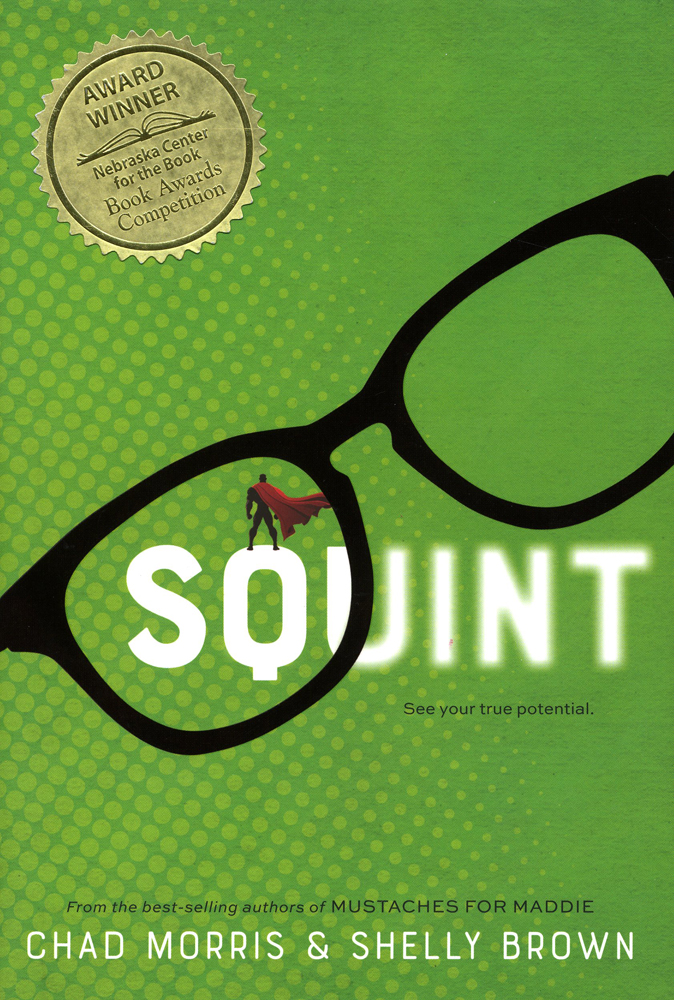
Flint, 13 and in 6th grade, is losing his eyesight. It has been deteriorating for a while and now he sits alone at lunch working on his entry for the “Find a Comic Book Star” contest – hoping to finish it before his eyesight is completely gone. His former best friend now bullies him, since Flint can no longer play on the football team as he used to, and now they call him “Squint.”
Then one day the new girl, McKell, sits with him at lunch. He first thinks it must be some kind of a trick, since she is friends with the popular group. When he realizes it is not a trick, Flint and McKell begin to develop a friendship – focused on McKell’s brother Danny’s, challenges on YouTube. She needs help to keep her promise to him – to complete certain challenges.
Hitting topics such as: bullying, empathy, loss, and friendship, as SLJ says, “Recommend for any library serving middle grade readers.”
Set in Lincoln , NE, this title is the 2019 winner of the Nebraska Center for the Book, Teen Novel Award.
Morris, Chad & Shelly Brown. Squint. Shadow Mountain, 2018.
Posted in Books & Reading, Nebraska Center for the Book, Youth Services
Tagged Friday Reads
Leave a comment
Friday Reads: Underland by Robert Macfarlane

When I was eighteen years old, I hiked with my freshman anthropology class from the Hudson-Meng dig site to Toadstool Geological Park, out in Nebraska’s Panhandle. It was one of the longest, hottest hikes I have ever trekked, the first where I’d ever heard the blood-freezing bone-shake tambourine of a rattlesnake and her tail, mere feet away from where I stood, and where I, with only my own two legs, traveled back in time. It is one of my favorite memories. Standing in a mostly-dry riverbank, after crossing over the pale limestone gashes in the the grasslands, eyes raised to the multicolored strata of the earthen walls around me, I was beneath and surrounded by different ages of the Earth, upon which feet so like mine might have tread. There is nothing that makes you feel smaller, more connected, more human.
Robert Macfarlane’s Underland swept me back to that moment in a breathtaking work of nonfiction. His writing is crisp, lyrical, and heart-cuttingly honest. The mark of an experienced storyteller traces through each paragraph and page like the webs of fungi beneath earth’s forests, connecting and communicating and enriching his experiences and ideas. Whether he is describing the way colors and sound return to the self after exiting a cave system, or forcing his body to crawl inch by claustrophobic inch through an unstable tunnel scarcely bigger than himself, there is a breath-robbing sense of adventure and awe throughout his journey.
There is also the sense of a great ache; we are, he writes, and circles back to, in the midst of the Anthropocene – the geological epoch of human impact, to be noted in the strata of our planet when we are long gone, “what will survive of us is plastic, swine bones and lead-207, the stable isotope at the end of the uranium-235 decay chain” (77). But this is not a book of pessimism, nor of misanthropy, even as it turns its gaze to The Hiding Place, in Olkiluoto, Finland, where we prepare to seal our nuclear waste. This is not a place of honour, the inscription for that chamber begins – a deterrent for the generations we hope that will come after us. And it is with the hope in the generations of whatever life that will come that the work is being done, Macfarlane realizes.
“The same three tasks recur across cultures and epochs: to shelter what is precious, to yield what is valuable, and to dispose of what is harmful” (8). This is why we go down into the Earth, why it features so heavily in our mythologies across our cultures and ages — what we have buried is a part of us, a reflection of us, what we grieve and what we hope for and what we believe in, the unknown selves we wish to uncover. It is as much a part of our future as it is our past. Underland begins with analyzing our reflexive revulsion to the underlands, and then peels back the earth and uncovers beauty and an incredible, unfathomable stretch of time that goes far before us, and will carry on far after.
Macfarlane, Robert. Underland: A Deep Time Journey. W. W. Norton, 2019.
Friday Reads: Tuesday Mooney Talks to Ghosts, by Kate Racculia
I picked up Tuesday Mooney Talks to Ghosts, by Kate Racculia, read the blurb, as I usually do, and thought, I have to see how she makes this work! In reading it, I fell in love with the book.

Tuesday Mooney Talks to Ghosts by Kate Racculia
It all begins with Tuesday Mooney, the title character, who works as a researcher for a hospital, and has volunteered for a charity event the hospital is sponsoring. She grew up in Salem, Massachusetts, yes, that one, and had a fascination with all the morbid, Goth type things. She still wears black, occasionally wearing heels for occasions. At this charity auction, a member of the wealthy Arches family deigns to attend. They strike up an unlikely flirtation, since he is unlike the profile she has pulled together. Her friend, Dex, a VP of a finance establishment, comes over to be somewhere, other than in the bar where he just broke up with his last boyfriend. Dex finds a seat with a lady, Lila Price, who turns out to be the wife of multi-billionaire Vincent Pryce (note, please, the Y, and the character claims to have been named by his parents, Vincent Price’s christening name was Vincent Leonard Price, Jr.—also named by his parents, and father, Vincent Leonard Price, Sr.). During the auction, Pryce dies, mid-bid. Two days later, a self-written, full page, obituary appears in the newspaper, starting a treasure hunt/game, with a wake/masquerade/party on the Boston Common at the end of the month (October.) And off go the seekers, Tuesday, Nathan, Dex, and eventually, many other dreamers and characters from around Boston.
Amid all the eccentricities, these are characters created in the round that are sympathetic. All have suffered and grieved. Tuesday’s best friend went missing in her teen years, and was never found. The young Nathanael Arches’ father disappeared from a rowboat, his body never found. Tuesday’s teenage next-door neighbor and her father have lost her mother due to a car accident. Mrs. Pryce has lost her husband.
The banter itself is enough to endear the book to any reader. The pop culture references alone are worked in well, Batman and Edgar Allen Poe, The X Files, and Prince. The author has an interesting way with words, in one sentence Dex says of Tuesday, “Every time Dex succeeded in making Tuesday smile, it was like seeing a rainbow over a haunted house.”
And the layers, there are the layers of loss, and the layers of the game. The layers of what is said, and all that isn’t said. The ghosts that are memory, regret, and actual. It all works. Tuesday loses her job due to her own mistake. Dex realizes the path not taken, can be returned to, the teenager finds a new friendship with another teenager, and the heir finds a family. None of it is as neat and tidy as I make it seem, and the author does an interesting job of both tying up the threads of the story, and still leaving them seem like real life, and a beginning.
Tuesday Mooney Talks to Ghosts, by Kate Racculia, hardback, Houghton Mifflin Harcourt, 2019, ISBN 9780358023939
Posted in Books & Reading
Tagged Friday Reads, Ghosts, Kate Racculia, Treasure Hunts, Tuesday Mooney
Leave a comment
Friday Reads: Buried to the Brim by Jenn McKinlay
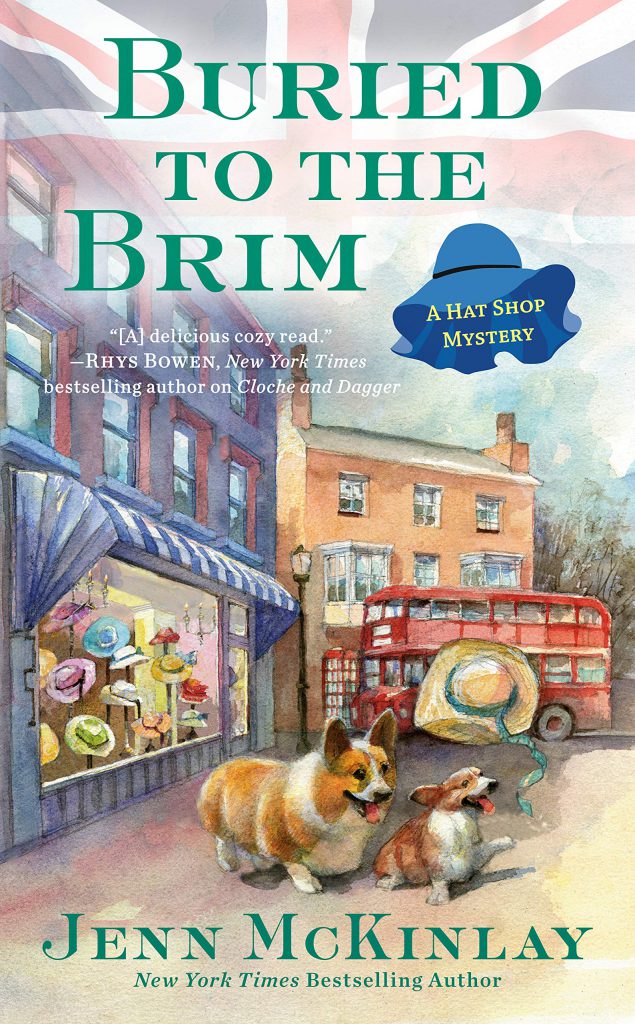
In these interesting times we find ourselves living in I figured a nice fluffy read was in order, and in this case it’s literal!
Buried to the Brim by Jenn McKinlay is part of the “Hat Shop Mystery” series that follow Scarlett Parker on her adventures. Originally from the states Scarlett and her cousin Viv run the hat shop, Mim’s Whims, that was left to the both of them by their grandmother. This book begins with Scarlett’s fiance coming to the shop needing a favor for his Aunt Betty and her dog Freddy. (I told you it was a fluffy read.)
Aunt Betty and Freddy have been competing in the local charity dog show for the last few years and have always managed to only come in second. Wanting something that will give them an edge in this years competition they’ve come to ask if Mim’s Whims will make a hat for Freddy to wear while competing.
My only disappointment with this book is that aren’t any illustrations! Viv, after some convincing, ends up making multiple hats not only for Freddy but matching ones for Aunt Betty as well. To see those creations atop Freddy’s fluffy little head fills my corgi loving heart with glee.
I’m usually not much of a mystery reader but seeing as Jenn McKinlay also has written a few romance novels this definitely didn’t have much of a “who-done-it” feel to it. I also enjoyed the fact that even though this was the sixth book in the series it stands well on it’s own and I never felt like I was missing anything by not having read the other books. Now that I’ve finished Buried to the Brim I definitely want to read the other books in the series, although they can’t be nearly as good without a corgi in them.

But it’s okay though, I have a corgi of my very own. Anyone know where I can pick up a top hat for Charlie?
Posted in Books & Reading
Tagged #FridayReads, dogs, Friday Reads, mysteries, mystery, Reading
Leave a comment
Friday Reads: Tightrope: Americans Reaching for Hope, by Nicholas D. Kristof and Sheryl WuDunn
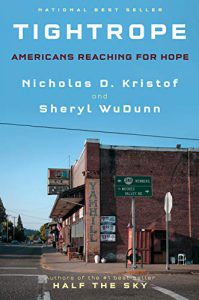
Tightrope, by married, Pulitzer Prize-winning journalists Nicholas Kristof and Sheryl WuDunn, is one of a number of recent books spotlighting the hopelessness and dysfunction that have decimated working-class America. In the 1970s, when Kristof was growing up in Yamhill, Oregon, working-class parents with good-paying union jobs had better lives than their parents did; everyone anticipated their children, with more education, would do better still. Sadly, that wasn’t the case. And, as the authors argue, this squandered potential hurts not just individuals who find themselves on a downward trajectory; it hurts the country as a whole.
Kristof and WuDunn document this reversal of fortune with extensive data, tracking declining median wages, life expectancy, educational achievement, and more. Citing the Social Progress Index, they point out that the United States now “rank[s] number 32 in internet access, number 39 in access to clean drinking water, number 50 in personal safety and number 61 in high-school enrollment…. Overall, the Social Progress Index ranks the United States number 25 in well-being of citizens, behind all the other members of the G7 as well as significantly poorer countries like Portugal and Slovenia” (13-14).
Kristof and WuDunn approach this topic not just through statistics, though. They humanize the crisis by sharing stories of friends and neighbors Kristof grew up with in Yamhill, Oregon, many of whose lives unraveled due to poverty, unemployment, substance abuse, incarceration, and despair. Here’s one stark metric they use to illustrate the extent of the problem: “About one-fourth of the kids who rode with Nick on the [school] bus are dead from drugs, suicide, alcohol, obesity, reckless accidents and other pathologies” (8).
Because Kristof grew up with many of his subjects and has had a lifelong relationship with them, he sees and portrays them as individuals possessing strengths and weaknesses. He acknowledges the bad choices they’ve made, but he’s also aware of their talents, their untapped potential, and the points at which their families, their schools, and punitive social policies let them down. Based on this insight, Kristoff and WuDunn contend that to address this crisis, we need to “transcend the customary narrative that focuses only on ‘personal responsibility’ and on glib talk about lifting oneself up by the bootstraps” (19). Additionally, we need to consider seriously what our collective responsibility is and should be.
Kristof, Nicholas D., and Sheryl WuDunn. Tightrope: Americans Reaching for Hope. New York. Alfred A. Knopf, 2020.

